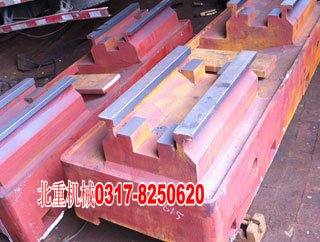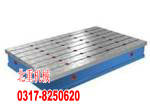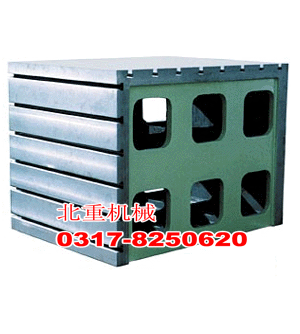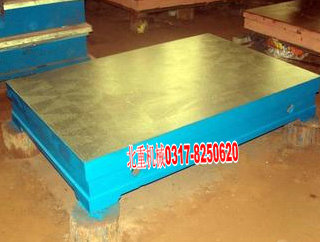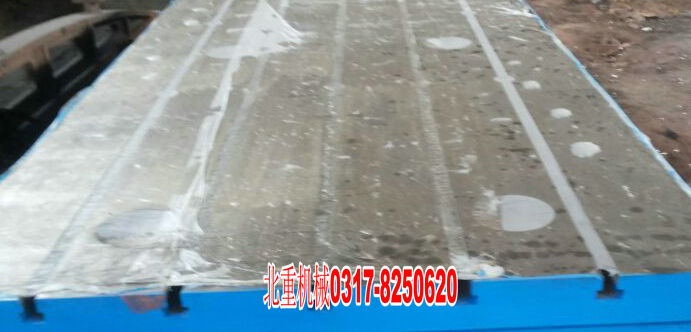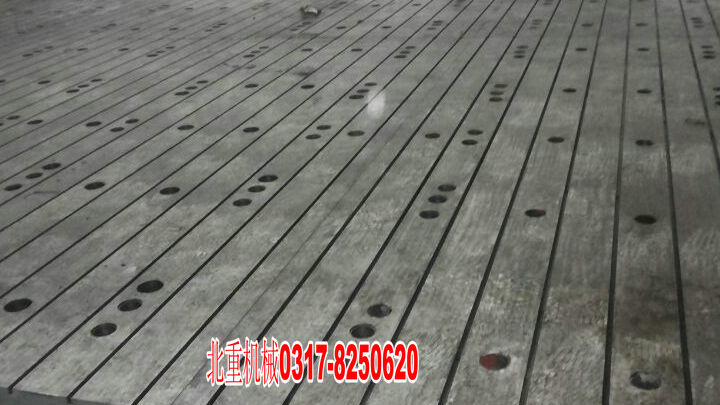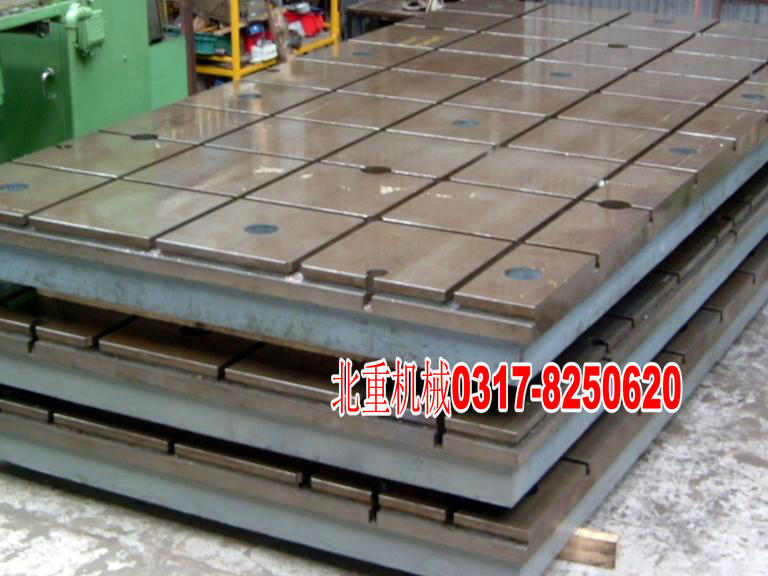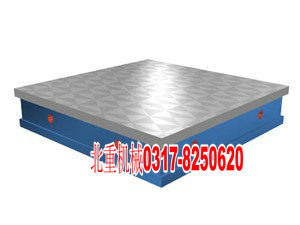检验平台技术要求:
1、检验平台工作面不得有严重影响外观和使用性能的砂孔、气孔、裂纹、夹渣、缩松、划痕、碰伤、绣点等缺陷。2、检验平台的铸造表面应清除型砂且平整,涂漆牢固。 3、检验平台精度等级为0级~3级的平板工作面上,直径小于15mm的砂孔允许用相同材料堵塞,其硬度应小于周围材料的硬度。工作面堵塞的砂孔应不多于4个,且砂孔之间的距离应不小于80mm。 4、检验平台应采用优质细密的灰口铸铁等材料制造,其工作面硬度应为170~220HB。 5、检验平台工作面通常采用刮削工艺。对采用刮削加工的3级平台工作面,其表面粗糙度Ra最大允许值为5μm。 6、检验平台应去磁和稳定性处理。 7、检验平台相对两个侧面上,应有安装手柄或吊环装置的螺纹孔(或圆柱孔),且装置位置的设计应尽量减少因搬运而引起的变形。 8.若检验平台工作面上设置螺纹孔(或沟槽),其部位应不高于工作面。
Technical requirements of Inspection surface Plate:
The working surface, when inspected visually, shall be free from blowholes, sand holes, cracks, slag inclusions scratches, porous patches and other visual flaws.
The working surface shall be clean and uniform and the other sides shall be painted well.
The plugging of blowholes or porous patches in the working surface with material of a similar composition is permitted provided that such a repair does not affect stability or accuracy.
The raw material of Cast Iron Surface Plate shall be the close-grained cast iron whose hardness is of HB 170~220.
wher tapped holes or inserts are required the necessary work shall be carried out before the working surface is finished.
检验平台的维修保养:
1、为了防止检验平台发生变形,在吊装检验平台时,要用四根同样长度的钢丝绳同时挂住检验平台上得四个起重孔,将检验平台平稳吊装在运输工具上。检验平台不可以堆叠存放,防止因为堆叠挤压造成检验平台变形 2、将检验平台支承点垫好、垫平,保证每个支撑点受力均匀,保证整个检验平台平稳。 3、检验平台安装时将检验平台的各个支撑点用调整垫铁垫好、垫实,由专业技术人员将检验平台调整至合格精度。 4、使用检验平台时,安装机械设备零件时,不要在检验平台上安装,更不可以使用榔头、钳子等工具敲打检验平台。安放机械设备零件应该轻拿轻放,防止机械设备零件和检验平台强烈碰撞。如果检验平台表面和机械零件发生碰撞,应把收到撞击凹陷或凸起的部分修复好后再继续使用;不要在检验平台上挪动比较粗糙的工件,以免对检验平台工作面造成磕碰、划伤等损坏; 5、为了防止检验平台整体变形,使用完毕后,要将工件从检验平台上拿下来,避免工件长时间对检验平台重压造成检验平台的变形。 6、检验平台不用时要及时将工作面洗净,然后涂上一层防锈油,并用防锈纸盖上,用检验平台的外包装将检验平台盖好,以防止平时不注意造成对检验平台工作面的损伤。 7、检验平台应安装在通风、干燥的环境中,并远离热源、有腐蚀的气体、有腐蚀的液体。 8、检验平台按国家标准实行定期周检,检定周期根据具体情况可为6-12个月。
Maintenance of Inspection Surface Plate:
1. A surface plate is a a surface plate is a datum and should be protected against damage. The top should be frequently wiped clean from dust and other particles. When measurements are being made, a cloth should be spread on the surface plate on which small tools and gauges can be placed when not in use. When the surface plate is not in use the top should always be kept covered.
2. The plate should be in a location away from direct sunlight and sources of draughts which could cause a vertical gradient of temperature such that the top and underside of the surface plate are at different temperatures.
3. Stands should be located on a stable foundation. the surface plate should be supported firmly and levelled.
4. Care should be taken that, wherver possible, the load on a surface plate is distributed over the working surface.
5. Use should be made of the full available area of the working surface and not concentrated on any one area.a common form of damage to cast iron surface plates is burrs on the working surface. the excess metal may be stoned away by attention confined to the burr. this operation should be followed by thorough cleaning with abrasive dust. if the surface plate is not required for some days, the surface should be coated with a corrosion preventive, such as petroleum jelly. rusting is a sign of neglect and misuse. its effects can be reduced by frequently wiping the top when in use and by occasionally gently rubbing with another surface plate.
6. Users are advised to take advantage of the specialized services of surface plate manufacturers to have surface plates reconditioned.






